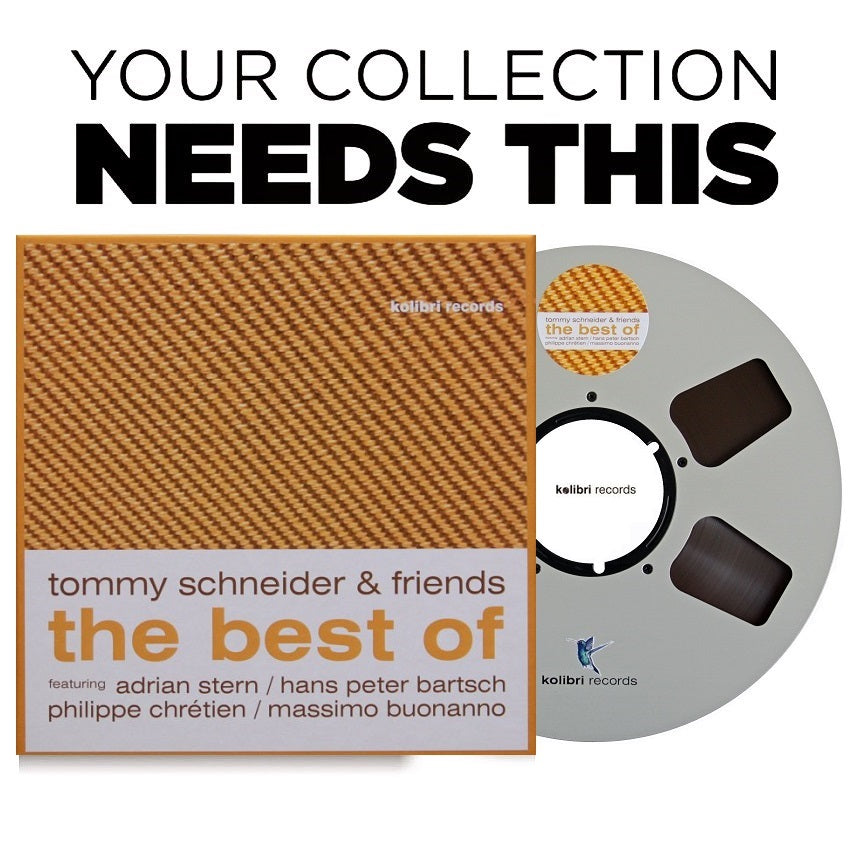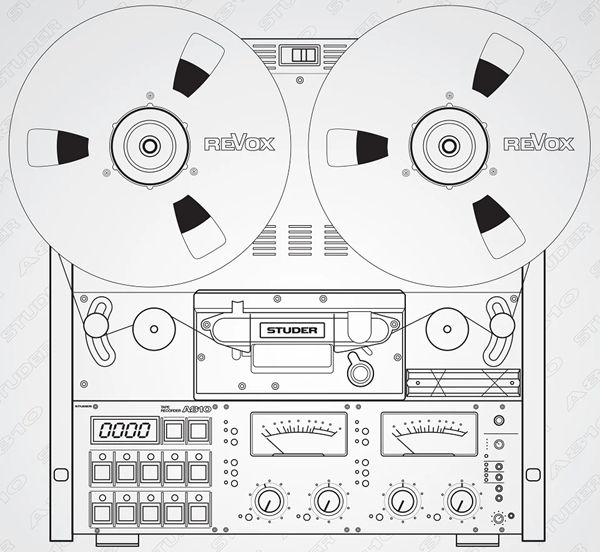Buddy Tate, Milt Buckner, Wallace Bishop – Jazz Masters Legendary Jazz Recordings. MW Coding Process Audiophile Reference LP Record. Featuring a number of fine musicians at their very best relax, sit back and enjoy the music. This recordings available in DMM 180gm vinyl
The Legendary Jazz Recordings Volume 1 in this Jazz Masters series offers you a selection of classic Jazz Standards, recorded by STS Digital to Master Tape and engineered using the STS 'MW' process. The Dutch jazz musicians offer fine renditions of these songs, all beautifully captured by Fritz and his small team in the Netherlands.
In this Vinyl, you will find:
1. The warm sound, that acoustic instruments posess on their own, but is often not captured by sound-technicians.
2. Acoustic placing and recognition of the musicians in the recording space.
3. Phase purity of a recording, both the electric phase (good cable/fibre connections etc), and the acoustic phase must be acquired through proper placing of the microphones.
4. Symmetry in the recording; this means always placing the microphones in such a way that on both the left and the right side there’s an equal division of signal, and not placing mono support microphones on the extreme left and right.
5. Transparency and clarity in a recording. This does not mean an overly sharp recording, but one of softness in tone and clarity, in which especially the 3-dimensional recording-space is being displayed.
The name ‘STS’ is short for “Studio Tape Sound” and Fritz and wife Nettie set up STS Analog some twenty years ago as a result of many, many years of recording orchestras and musicians in the Netherlands. The “Digital” in the name refers to reproducing many of the titles on CD, SACDs. Many CDs are recorded using their own STS Digital MW Coding Process to make them sound more “analogue”.
This excellent album originating from two recordings made in the 1970’s includes Buddy Tate on tenor sax, Milt Buckner on electric organ or piano and Wallace Bishop on drums; all effortlessly performing with a tight saxophone, a close mic’d organ sound (complete with vocal noises from Milt and the sound of him hitting the notes on the keys) and a well-spread drum kit. The timely electric organ reminded me of the days of 2-manual organs reticent in many homes in the 60’s and 70’s for wannabee Klaus Wunderlich’s. The sound might be dated but it was just so enjoyable. What Fritz has done is remix these closely mic’d recordings by adding reverb from a rare Philips/Marantz AX1000 “Audio Computer”. This DSP (digital signal processor) analyses the sound and processes EQ and ambience, recreating concert halls such as Symphony Hall, Boston, Royal Albert Hall, London, Concertgebouw, Amsterdam, and Opera House, New York, to name just a few. It can even enhance the soundstage using its “Stereo Control” feature. Of five hundred AX1000’s having being made Fritz has 2 of them. The added ambient atmosphere Fritz uses is both appropriate and correctly proportioned.
Sometimes simplicity is the best, and this trio of Milt, Buddy and Wallace excelled with ease and space to allow the music to live and breathe in a way that allows the listener can get to know and almost take part in the music. The noise from Milt and the finger punching of the keys I found very involving. This recording might not have Dolby A or B (thank goodness) but any tape hiss disappeared from my senses as soon the music took over. Indeed, this is an extremely noise-free recording; Fritz making sure that the record level is as high as can be attained without any saturation of the tape and without the replay heads on the players themselves ending up being over-drenched in magnetic patterns. The Sony TC-766-2 meter only hit +3dB at the peaks and my Revox PR99 never showing any flashing red light “this is just too loud!” indications, though it got close. Fritz’s ability to get recording level just right was well noted by me. Never does the sound come across over modulated. Indeed, even his CD recordings are made so that they don’t get higher than -2dB. A similar philosophy was used at the BBC, with reel to reels not exceeding PPM6 on the Peak reading meters. The BBC moto of “Nation Shall Speak Unto Nation” was revised by BBC sound engineers to “Nation Shall Peak 6 Unto Nation”.
Whilst there are 8 tracks labelled on the SP (standard play) tape I actually counted 10, though that didn’t worry me; the last one being faded out as it got near the end of the reel. Fritz wants to make sure as much music gets onto each tape. The CD version includes 15 tracks. Jazz Masters 2, 3 and 4 are already available with a fifth being produced when Fritz gets around to it.
The recording starts with the laid back “When I’m Blue” with running commentary from Milt uttering phrases including “yes indeed” and “careful now” and “Hit it Blue” as he works rhythm’s between himself, the saxophone and the drums, as if they are in deep conversation. The close mic’ing not only picks up the words and noises from Milt, but also his fingers hitting the keys; the instrument almost becoming part of his own body. You just need a smoky room and an audience to make it totally believable. One of my favourites on Jazz Masters 1 is “September Song”, composed by Kurt Weill with lyrics by Maxwell Anderson, introduced by Walter Huston in the 1938 Broadway musical production Knickerbocker Holiday, and also the theme tune of a well-loved (and one of my favourite) 1989-94 TV series “May To September”, with Buddy Tate performing miracles on two saxophones simultaneously this is an epic studio recording, all in a very slow and laidback style, as if we have just as many months to play it from beginning to end, not that I got bored; this was an emotional performance with the Milt’s keyboard skills this time acting as organ donor to the sax. “Midnight Sun” continues the theme of close mic’ing of the keys of the piano, with much level change in the music using the organ foot-pedal, hearing Milt’s fingers tapping away, actually gave the music an extra feel of reality and depth to the music, rather than an annoying addition. The descending piano notes were like drops of rain showing perhaps there were a few clouds amidst the midnight sun. This music really does show the personal (finger) touch, even if this time Milt’s vocal embellishments aren’t making quite such a riposte as a few earlier tracks. The saxophone is missing here, and the drums are carefully and sparingly added to the musical painting. “That’s All” has a closer drum kit balance, giving yet another set of colours to this acoustic palette. “Sophisticated lady” is a complex recording with a full orchestral band complete with glockenspiel. “Angel Eyes” brings the party back to the original organ, sax (duo) and drums, with some great mic’ing, especially of the sax, and this time with microphone closer to the organ loudspeaker. Whilst some more detail of the recording itself wasn’t available on the box for such an expensive collection of music (such as when and where they were recorded, microphones used, and all the musicians names) it didn’t stop my enjoyment of the music. To be honest, it was recorded so long ago that Fritz didn’t have any information, just as my own recordings in the 70’s and 80’s barely had a few words on the spines of the boxes.
Jazz Masters Legendary Jazz Recordings Series - STS Analog








